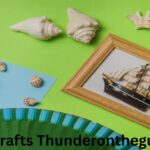Exploring artistic hobbies is one of the best ways to unwind after a long day. Art isn’t just for professionals with years of training. Everyone can enjoy creative expression regardless of skill level. Many adults haven’t created art since childhood, missing out on the incredible stress relief activities that artistic pursuits offer.
In recent years, more people have discovered the joy of beginner-friendly projects that can be done right at home. Science backs this up too – Smithsonian Magazine reports that engaging in arts and crafts provides significant benefits for mental health and emotional well-being.
If you’re feeling the urge to create but aren’t sure where to start, this guide offers 33 easy art ideas that anyone can try. These DIY crafts require minimal supplies and zero experience. Let’s explore some creative outlets that will bring joy to your life in 2025!
Canvas Art Ideas
Canvas offers the perfect blank slate for beginners. These canvas art ideas require minimal skills but deliver maximum satisfaction.Canvas art opens up a world of creativity for beginners, offering forgiving and fun techniques that don’t require professional skills.
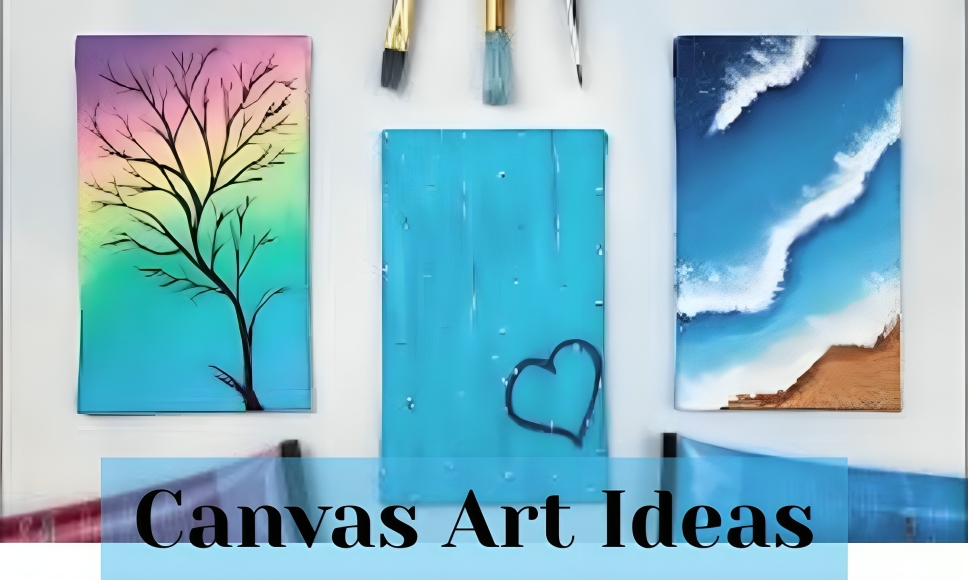
From finger painting to pour painting, these methods allow you to explore color, texture, and self-expression without the pressure of creating a masterpiece.
Whether you’re looking to unwind after a long day or discover a new hobby, canvas art provides an accessible and enjoyable way to tap into your inner artist.
1. Join a Paint and Sip Session
Paint and sip sessions combine creative skills with relaxation. Wine and art make a perfect pair! These guided classes take the pressure off creating. An instructor walks you through each step. Everyone leaves with a finished painting. These sessions are available both in-person and online.
They provide the perfect introduction to painting techniques. The casual atmosphere helps beginners feel comfortable. No experience is necessary to create something beautiful.
2. Rain Painting
Rain painting embraces beautiful imperfections. This technique releases you from the need for precision. Colors blend naturally as they would in actual rainfall. You can create rainy scenes where lines blur intentionally.
Some artists even place their canvases outside during light rain showers. The raindrops create natural textures impossible to achieve with brushes alone. This method works wonderfully for landscapes and abstract pieces.
3. Hand Sketching
Sketching requires just paper and pencil. It’s perhaps the most accessible artistic technique for beginners. Start by drawing simple objects around your home. Your coffee mug makes an excellent first subject. Don’t worry about perfect proportions. Focus instead on really seeing the object.
Notice shadows, highlights, and textures. Regular sketching dramatically improves observation skills. Fifteen minutes of daily practice yields surprising results.
4. Finger Paint
Finger painting isn’t just for kids! This tactile activity connects you directly with the paint. The results are often more expressive than brush work. The direct contact with colors creates a deeply satisfying experience.
Try mixing colors directly on the canvas with your fingertips. Create swirls, patterns, or abstract landscapes. Keep a damp towel nearby for easy cleanup. This approach works especially well for abstract art.
READ THIS BLOG : Gotxen Godolix: A Revolution in Modern Gastronomy
5. Watercolor
Watercolor painting for beginners offers a gentle introduction to painting. The fluid nature of watercolors creates beautiful effects with minimal effort. Start with simple washes of color.
Experiment with wet-on-wet techniques where colors blend naturally. Watercolors forgive many mistakes – simply add more water to soften harsh lines.
The transparent quality creates a luminous effect unique to this medium. Even simple color blocks can create stunning results.
6. Collaborative Canvas
Collaborative art brings people together through creativity. Each person contributes to a single piece. Family members can take turns adding elements to a shared canvas. This approach works wonderfully for roommates or couples.
The final piece represents everyone’s unique perspective. Children especially enjoy seeing how others build upon their contributions. This activity strengthens relationships while creating meaningful art.
7. Pour Painting
Pour painting creates stunning effects with minimal skill. Simply pour fluid acrylic paints onto canvas. Tilt the canvas to create flowing patterns. The colors interact in unpredictable, beautiful ways. This technique embraces happy accidents.
Each piece comes out completely unique. YouTube offers countless tutorials on different pouring techniques. This approach works wonderfully for creating abstract pieces with vibrant color interactions.
8. Abstract Image Recreation
This creative activity transforms photos into collaborative art pieces. Cut a photo into equal squares. Assign each person a square to recreate. When finished, reassemble all squares into a cohesive piece.
The slight differences in interpretation create fascinating results. Family pets make excellent subjects for this project. The final piece combines everyone’s unique artistic perspective into one meaningful whole.
9. Melted Wax Canvas
Melted crayon art creates vibrant, flowing designs. Glue crayons along the top edge of your canvas. Use a hairdryer to melt them, creating colorful drips down the canvas. Alternatively, break crayons into pieces and melt them directly onto the canvas.
Consider creating an umbrella scene with wax “rain” pouring down. The melting process feels magical as colors transform before your eyes.
10. Micro Art
Micro art focuses on tiny details often overlooked. Choose a small subject like a flower petal or insect wing. Create a greatly enlarged version showing all tiny details. This mindfulness activity improves observation skills dramatically.
The intense focus required creates a meditative state. This technique helps develop patience and attention to detail. The results often surprise viewers with unexpected beauty in ordinary objects.
Unique Art Ideas
These unconventional creative outlets offer fresh approaches to making art. Perfect for those seeking something different.Unique art ideas break away from traditional painting, inviting creativity through unexpected mediums and approaches.
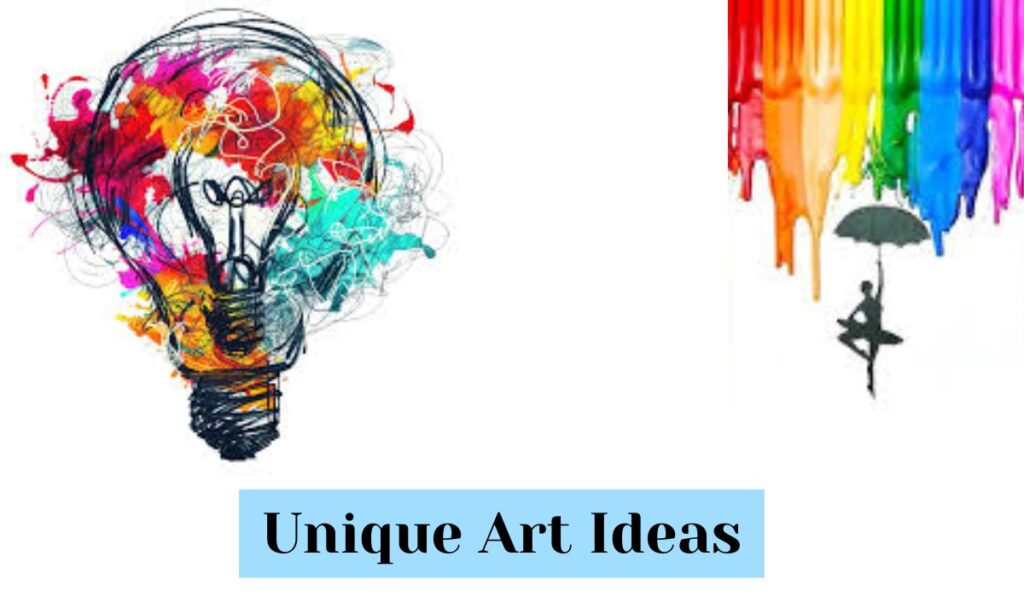
These unconventional projects transform everyday materials into extraordinary artistic expressions, making art accessible to everyone regardless of skill level.
From floral arranging to creating 3D wall art with recycled materials, these ideas prove that art is limited only by imagination and can be found in the most surprising places.
11. Take a Local Art Class
Local art classes provide structure and community. Professional guidance helps beginners avoid common mistakes. Classes offer specialized equipment you might not have at home. The social aspect creates accountability and motivation.
Many community centers offer affordable options. Senior centers often provide free classes for older adults. Local art supply stores frequently host workshops for beginners. The supportive environment makes learning new techniques less intimidating.
12. Make Floral Art
Floral arranging transforms natural elements into living sculptures. This artistic hobby connects you with nature’s beauty. Learn basic principles of balance, color, and texture. Create arrangements from grocery store bouquets or backyard finds.
Even simple arrangements bring natural beauty into your home. This art form engages all senses, including smell. Virtual floral arranging classes have become increasingly accessible online.
13. Wall Mural
Wall murals transform living spaces dramatically. Start with a small area like a bathroom or closet. Simple designs like flowers or geometric patterns work well for beginners. Pencil your design lightly before adding paint.
Consider removable options if you’re renting. This project creates high-impact, personalized decor. Children’s rooms provide perfect spaces for playful designs.
14. Foot Pig
This whimsical project creates adorable keepsakes, especially with children. Press a foot into pink paint, then onto paper. Once dry, add paper ears, googly eyes, and a curly pipe cleaner tail. The heel becomes the pig’s face when turned upside down. This makes a charming memento of a child’s growth. The finished piece often becomes a treasured keepsake for parents and grandparents.
15. Embroidery
Embroidery offers a portable, relaxing artistic technique. Basic stitches are easy to learn through online tutorials. Start with a simple pattern on embroidery hoop fabric. This craft travels well for creative time anywhere.
The repetitive motion creates a meditative state. Finished pieces make thoughtful, personalized gifts. Modern patterns offer contemporary designs beyond traditional flowers.
16. 3D Wall Art
Create dimensional art using recycled shoeboxes. Transform the interior into a miniature scene or diorama. Use polymer clay, fabric scraps, or found objects as decorative elements. The enclosed space creates a magical peek into another world.
This project recycles materials while creating unique decor. Children especially enjoy creating fantasy worlds within these small spaces.
17. Paper Art
Paper art requires only basic materials but creates stunning results. Cut intricate designs with scissors or X-ACTO knives. Layer different colored papers for dimensional effects. This artistic hobby develops patience and precision.
The contrast of positive and negative space creates dramatic results. Even simple designs can create impressive shadow effects when properly displayed.
18. Petal Paper Art
Handmade paper embedded with flower petals creates organic art. Soak shredded newspaper overnight until soft. Blend into pulp with a kitchen mixer. Press out excess water and flatten into sheets.
Press flower petals into the damp paper. Allow to dry completely for a natural, textured result. These unique papers make beautiful cards or framed art pieces.
19. Pom-Pom Tree
Pom-pom trees create whimsical, textural decorations. Attach colorful store-bought pom-poms to foam cone forms. Vary sizes and colors for visual interest. This simple project requires only basic gluing skills.
The finished piece adds playful color to any space. These make charming seasonal decorations that can be customized for any holiday.
20. Make Resin Paper Weights
Resin casting preserves natural elements in crystal-clear forms. Flowers, leaves, or small trinkets become suspended in time. Most craft stores sell complete beginner kits. This creative activity requires careful measurement and mixing.
The transformation from liquid to solid feels almost magical. Finished pieces make impressive gifts or desk accessories.
21. Portraits
Portrait creation connects us deeply with our subjects. Start with simple profiles or silhouettes. Photos can help beginners capture proportions accurately. Consider unconventional approaches like blind contour drawing.
READ THIS BLOG :
Portrait swaps with friends create fun comparative results. This intimate art form develops both technical skills and emotional perception. Even imperfect portraits often capture essential qualities of the subject.
Clay Art Ideas
Clay offers tactile satisfaction unlike any other medium. These clay projects welcome beginners with open arms.Clay art offers a tactile and immersive creative experience that connects you directly with your artistic medium.
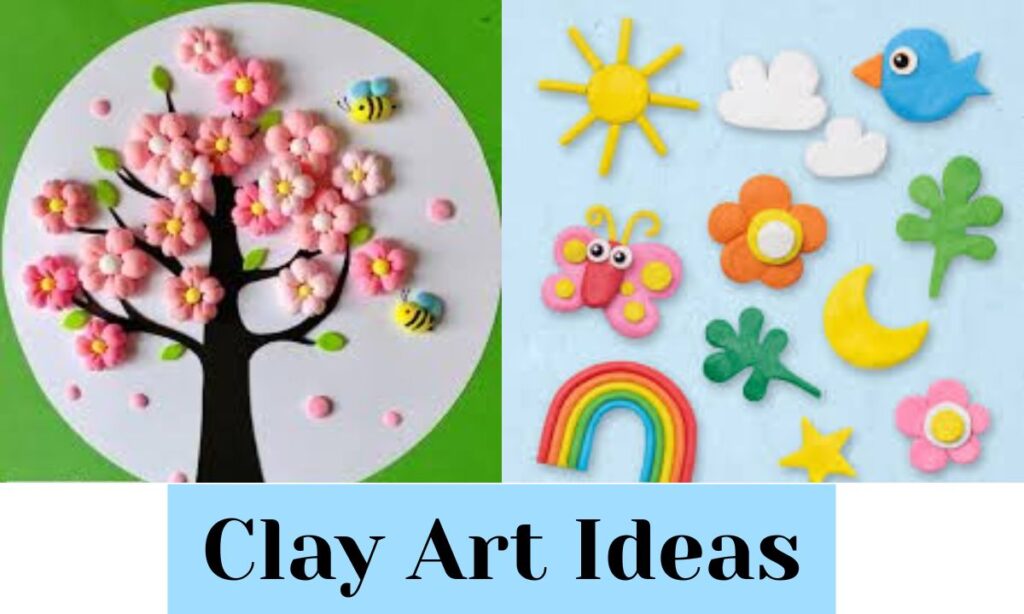
These projects range from simple pinch pots to more complex pottery techniques, allowing beginners to explore three-dimensional art forms that are both functional and beautiful.
The transformative nature of clay – from soft, malleable material to a permanent creation – provides a deeply satisfying artistic journey for creators of all skill levels.
22. Take a Pottery Class
Pottery classes provide essential equipment and expertise. The pottery wheel offers a unique creative experience. Professional kilns fire your creations for durability. Instructors help troubleshoot common beginner issues.
The communal atmosphere creates motivation and inspiration. Many studios offer drop-in sessions for beginners. The transformation from soft clay to permanent object feels deeply satisfying.
23. Homemade Mugs
Creating functional pottery connects art with daily life. Hand-building techniques require no wheel or special equipment. Simple pinch or coil methods create charming, rustic mugs. Colorful glazes add personal style to finished pieces.
Using something you’ve made yourself brings daily satisfaction. Children can create special gifts for family members. The imperfections make each piece uniquely valuable.
24. Garden Stones
Decorative garden stones add personality to outdoor spaces. Mix quick-setting concrete in plastic molds. Press handprints, leaves, or shells for texture. Embed glass beads or tiles for color and sparkle.
These sturdy creations withstand outdoor conditions. Children enjoy seeing their handprints preserved. These make meaningful gifts for gardeners and plant lovers.
25. Polymer Clay
Polymer clay offers endless possibilities without specialized equipment. This colorful medium stays soft until baked in a home oven. Create jewelry, small sculptures, or decorative items. The material holds detailed impressions wonderfully.
No special tools required beyond kitchen implements. This versatile medium comes in countless colors and finishes. Finished pieces are surprisingly durable for everyday use.
26. Make a Pinch Pot
Pinch pots represent humanity’s oldest pottery technique. Start with a ball of clay the size of your palm. Press your thumb into the center and gently pinch outward. This simple process creates surprisingly beautiful vessels.
Decorate with texture tools or colored glazes. Each pot becomes uniquely organic in shape. This ancient technique connects modern creators with historical traditions.
Abstract Art Ideas
Abstract art liberates creators from representational pressure. These projects focus on color, shape, and emotion.Abstract art liberates creators from the constraints of realistic representation, focusing instead on emotion, color, and personal expression.
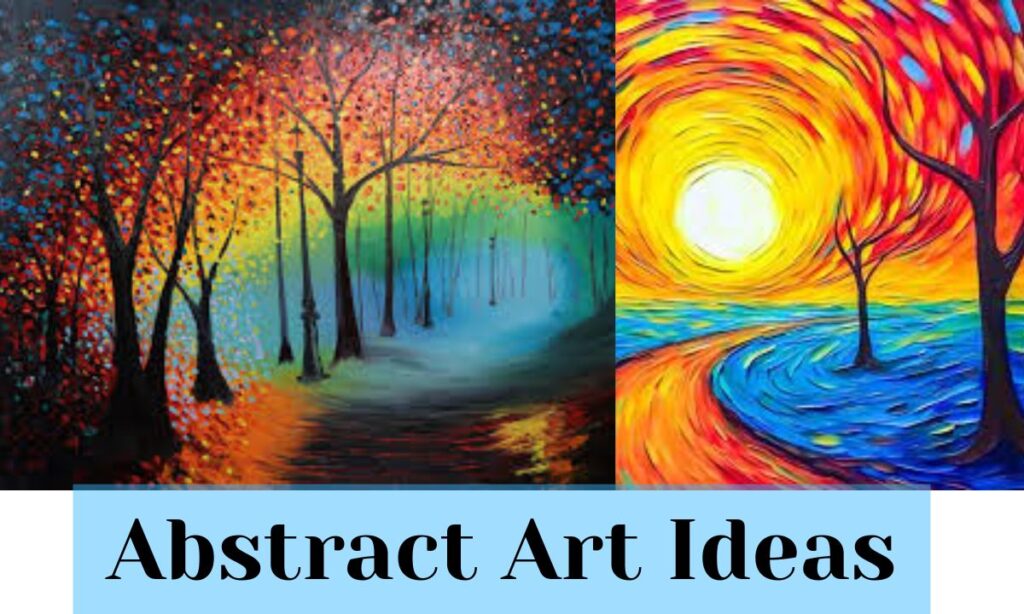
These projects encourage spontaneity and intuition, allowing artists to explore creativity without worrying about perfect proportions or precise details.
From mandala sketching to pin art, abstract techniques provide a playful and meditative approach to art-making that celebrates individual interpretation and creative freedom.
27. Sketch a Mandala
Mandala creation combines meditation with artistic expression. Begin with concentric circles as guides. Add repeating patterns working outward from the center. The repetitive process creates a calming, mindful state.
This stress relief activity produces beautiful geometric designs. The symmetrical patterns satisfy our natural love of order. Even simple mandalas create visually impressive results.
28. Pin Art
Pin art creates dimensional designs with simple materials. Push colored pins into foam board in meaningful patterns. The raised texture creates visual interest through shadows.
This technique works well for simple images or text. The dimensional quality adds unexpected depth. Finished pieces offer both visual and tactile interest.
29. Origami
Origami transforms single paper sheets into three-dimensional objects. Start with simple designs like boats or flowers. Follow step-by-step instructions widely available online. This ancient art form develops spatial reasoning.
The transformation process feels almost magical. Finished pieces make charming decorations or gifts. The portable nature makes this art form perfect for travel.
30. Embellish Your Thumbprints
Thumbprint art begins with the most personal mark possible. Press inked thumbs onto paper in rows or patterns. Once dry, add details to transform prints into creatures or objects.
This creative activity works wonderfully for group projects. Each participant contributes their unique thumbprint. The finished collective piece celebrates individual differences within community.
31. Paper Cut-Out Cityscape
Paper cityscapes create dramatic silhouettes with minimal materials. Cut building shapes from colored construction paper. Arrange against contrasting background paper. Add details like windows, doors, and street elements.
The layered effect creates dimension without advanced techniques. This project works well for classroom or family collaboration. The bold contrasts create visually striking results.
32. DIY Rorschach Art
Rorschach art embraces symmetrical accidents. Fold paper in half and apply paint to one side. Press halves together to transfer and mirror the design. The unpredictable results spark imagination.
This technique creates perfect symmetry automatically. Children especially enjoy the element of surprise. The psychological aspect adds interesting discussion opportunities.
33. Tie Dye T-shirt
Tie-dye creates wearable art with vibrant personality. Twist and bind fabric with rubber bands to create patterns. Apply fabric dye according to package directions. The reveal feels like Christmas morning every time.
This creative expression produces truly unique garments. Even mistakes create interesting, one-of-a-kind designs. The technique works on various fabric items beyond t-shirts.
Watercolor Painting for Beginners
Watercolor painting offers a gentle introduction to the world of painting. The flowing nature of the medium creates beautiful effects naturally.Watercolor painting offers a gentle and forgiving introduction to the world of artistic expression, with its flowing colors and translucent effects.
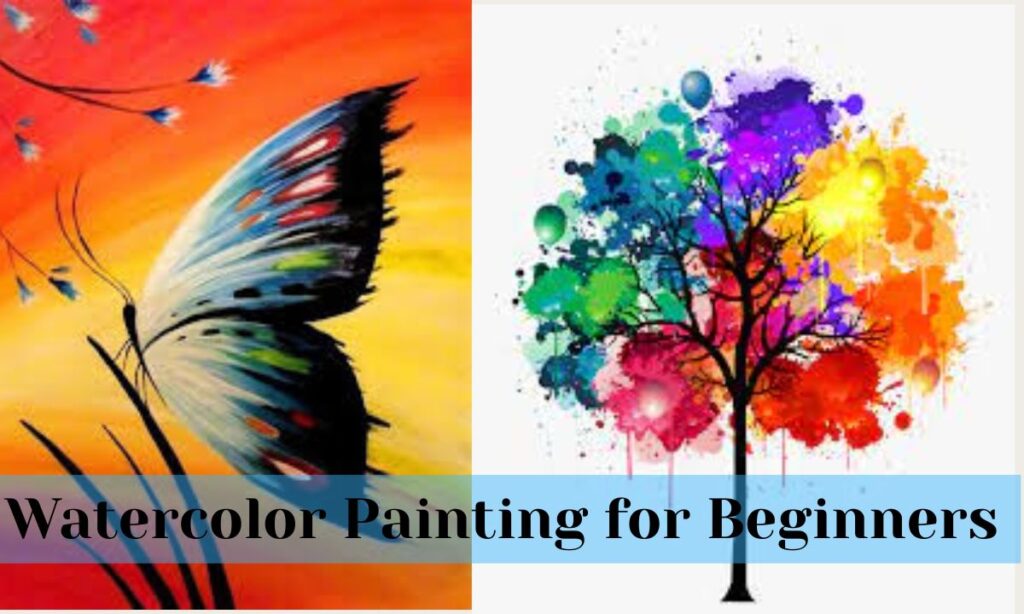
This medium allows beginners to create beautiful artwork through simple techniques like wet-on-wet and gradient washes, without requiring precise technical skills.
The unpredictable nature of watercolors makes each painting a unique journey of discovery, encouraging artists to embrace happy accidents and enjoy the creative process.
How to Paint With Watercolors?
Watercolor painting begins with understanding the unique properties of the medium. Start with wet-on-wet techniques where paint flows freely on damp paper. Move to wet-on-dry methods for more controlled lines and shapes. Allow each layer to dry before adding additional details.
Embrace the transparent nature of the medium rather than fighting it. Practice simple washes before attempting detailed work. Remember that watercolors appear darker when wet and lighten as they dry.
READ THIS BLOG : The 18 Best AI Video Generators (Free & Paid) to Try in 2025
Watercolor Supplies for Beginners
Quality supplies make watercolor painting much more enjoyable. Start with student-grade paints that balance quality and affordability. Choose a small set with primary colors plus green and brown. Cold-press watercolor paper provides ideal texture for beginners.
Invest in at least two good brushes – one round and one flat. A plastic palette with wells keeps colors separated. Consider a block of paper to minimize warping. Masking tape secures paper to a board for easier painting.
Frequently Asked Question
What art supplies should absolute beginners start with?
Begin with multi-purpose supplies that don’t require major investment. A sketchbook, graphite pencils, colored pencils, and a basic watercolor set provide versatility. Add a few brushes and erasers to complete your starter kit.
How can I improve my art skills quickly?
Daily practice, even just 15 minutes, builds skills faster than occasional long sessions. Study the fundamentals of shape, proportion, and perspective before focusing on details. Copy works you admire to understand techniques. Join online communities for feedback and motivation. Remember that progress happens gradually but consistently with regular practice.
Is it too late to learn art as an adult?
It’s never too late to begin creating art. Adult beginners often progress quickly due to determination and focus. Mature learners bring life experience that enriches their creative perspective. The adult brain remains capable of developing new skills throughout life. Many famous artists began their serious artistic pursuits later in life.
How do I find my personal art style?
Personal style develops naturally through consistent creation. Experiment widely with different mediums and subjects initially. Notice what techniques and themes you gravitate toward repeatedly. Your unique approach emerges from the intersection of what you enjoy and what you do well. Authentic style cannot be forced but evolves through prolific creation.
What should I do if I’m not satisfied with my artwork?
Dissatisfaction often indicates developing artistic taste rather than lack of talent. Identify specific elements you wish to improve rather than dismissing the entire work. Keep earlier pieces to track your progress over time. Remember that even professional artists feel critical of their own work. Consider each piece a necessary step in your artistic journey.
Conclusion
The world of creative expression opens endless possibilities for personal growth and enjoyment. These 33 beginner-friendly projects offer accessible entry points to artistic exploration regardless of previous experience. Remember that art is about the process as much as the result. The mental health benefits of regular creative outlets extend far beyond the finished pieces.
Start with projects that genuinely interest you rather than what seems impressive. Allow yourself permission to create imperfectly as you learn. Each attempt builds skills for future projects. The most important step is simply beginning.

jack is an experienced blogger and a passionate wordsmith at Phrase Pioneers. With a keen eye for language and a deep love for writing, she shares insightful posts on grammar, phrases, and the art of communication.


